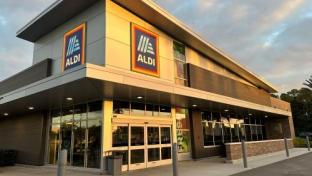PG Seafood Study Forecasts Healthy Outlook
Analysis by Bruce Horovitz | Research By Debra Chanil
Seafood would seem to be so utterly and definitively on trend that supermarkets would have a hard time keeping up with demand.
After all, most seafood is widely viewed as good for you — a clincher for health-conscious Millennial customers. Even the federal government recently recommended folks eat at least 8 ounces of seafood per week, which equates to two servings. Yet only one in 10 Americans actually consumes the recommended amount.
Nevertheless, insights from Progressive Grocer’s 2016 Retail Seafood Review survey indicate that the seafood section’s waters are increasingly perceived as inviting for more takers. The exclusive annual survey is unique in asking supermarket executives from around the country about the various forces in play in the average seafood department, from category performance to demand to sales.
One of the most revealing findings in this year’s annual retail seafood report is that not a single retail participant expects seafood sales to decline in 2016, alongside a fairly hopeful outlook for 2016 seafood sales. A hefty 46.4 percent of executives surveyed projected seafood sales would increase in 2016 — and the remainder said they’d at least stay the same.
Participants in the survey, which probed views from headquarters executives, seafood category leaders and department managers nationally, foresaw lots of converging seafood department trends. Besides the continued evolution toward fresh, local and sustainable fish, there was growing interest in value-added seafood offerings like ready-to-cook items or seafood that’s already marinated.
Most importantly, however, the survey revealed seafood departments that appear ready to swim without water wings.
So far-reaching is the optimism that positive seafood sales projections have even touched some of the nation’s smallest towns and grocers. In tiny Wagener, S.C., where about the only market in town is a Piggly Wiggly, the store has just begun in recent weeks to sell something it hasn’t sold before: fresh seafood.
“People are asking for it,” says Robert Crumpton, a retired manager who now works part-time in the store’s meat department — which has since been renamed the meat and seafood department. Although fresh fish is new to the store, the Piggly Wiggly is already selling upwards of $150 worth of it weekly, he estimates.
Fresh and Healthy
It appears that this trend toward fresh is being positively influenced by the 500-pound fish in the tank: Millennials.
“It’s the younger shoppers like Millennials that are asking for fresh, not frozen, fish,” affirms Crumpton. “Anything we can get that’s fresh, we sell.”
But Millennials don’t just want it fresh, they also want all available information about it. Above and beyond just about anything, Millennials need to know where their food comes from, according to a recent report from The NPD Group. In the report, Port Washington, N.Y.-based NPD gives a positive nod to the seafood industry for its bid to boost local sourcing and, yes, traceability.
Finally, it’s the health button that may help push fish from retail “meh” to retail sizzle in 2016. After all, consumer perception that fish and shellfish are healthier alternatives to meats like beef and pork could drive sales this year. Fish and shellfish sales domestically grew moderately between 2009 and 2014, reaching $16.7 billion, with expectations to reach $20.1 billion by 2019, according to Chicago-based market research firm Mintel.
Over the past 52 weeks ending Nov. 30, 2015, some 44 percent of supermarket executives said that seafood sales were up, the PG executive survey found. Meanwhile, about 52 percent said seafood sales remained the same, and just 4 percent said they fell.
At What Cost?
Then there’s that tricky sustainability catch.
Millennials are almost as concerned about the sustainability of the food they consume as they are about the amount of juice they have remaining on their smartphones. The issue is huge: More than three-fourths of Millennials surveyed by NPD said that the inherent sustainability of a product is important to them, and that they would pay more for products that meet this expectation.
But sustainable seafood comes at a price, literally: It costs more. Most Gen Z members and Millennials, however, are willing and eager to pay that price to eat better food. As a result, most fresh food, including fish, will play a key role in all meal choices over the next five years, according to NPD’s “The Future of Eating: Who’s Eating What in 2018” study.
“Foods on the store’s perimeter will benefit from this increasing interest in fresh,” said Darren Seifer, NPD food and beverage industry analyst.
Precisely where the fish comes from has never been more important to shoppers, the PGsurvey showed.
Over the past year, consumer demand for U.S. wild-caught salmon increased, according to half of those surveyed. Only 10 percent said that it decreased. At the same time, some 38 percent said demand for U.S. farm-raised seafood was up last year, while less than 9 percent said it was down.
Meanwhile, demand for imported farm-raised seafood was on the rise in 2015, the PGsurvey found. Nearly 38 percent of survey respondents said it was up, while just less than 23 percent said it was down. Demand for imported wild-caught seafood, however, appears to have ebbed: While about 24 percent said it increased last year, 21 percent said it fell and 54 percent said it was unchanged.
But consumers — particularly Millennials — don’t want fish with hints of mercury or any suspect stuff. Perhaps that’s why consumer demand for meat or seafood “free from” problematic additives was up among 58.5 percent of respondents in the past year.
“Consumers are seeking non-genetically modified foods in droves,” NPD concluded in its report. That’s the same mindset that benefits the likes of wild-seafood sales.
But there’s a problem here: again, it’s cost. Consumers often must pay a premium for sustainable or fresh seafood, and many don’t like that. As a result, when asked to name the biggest problems in their seafood departments, several executives surveyed by PGhit on the same issue: it costs too much. One executive complained about “the prices of wild-caught seafood,” while another bemoaned “the pricing of sustainable catch.”
When these high prices are passed along to shoppers, there’s bound to be blowback.
That’s why many supermarket executives surveyed by PGsaid they often turn to promotions to boost meat and seafood sales. Their most effective promotion: temporary price reductions. The next most effective promos they identified were sampling and flash sales.
Even in the seafood department, price clearly matters to shoppers.
A good chunk of the price problem for supermarkets appears to be limited supply. While supermarkets enjoy a plethora of meat suppliers, that’s hardly the case with seafood suppliers. “There aren’t many seafood suppliers,” noted one supermarket executive in his survey response. “There isn’t much competition, so our costs are high.”


